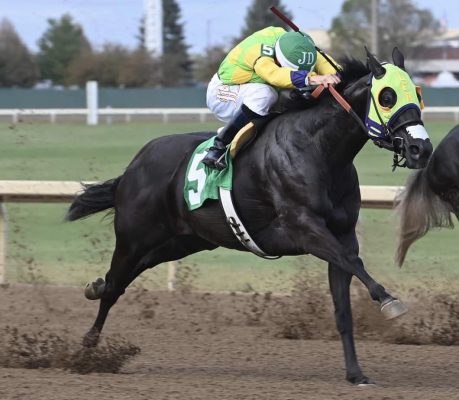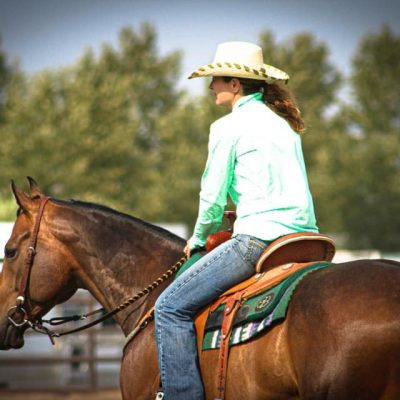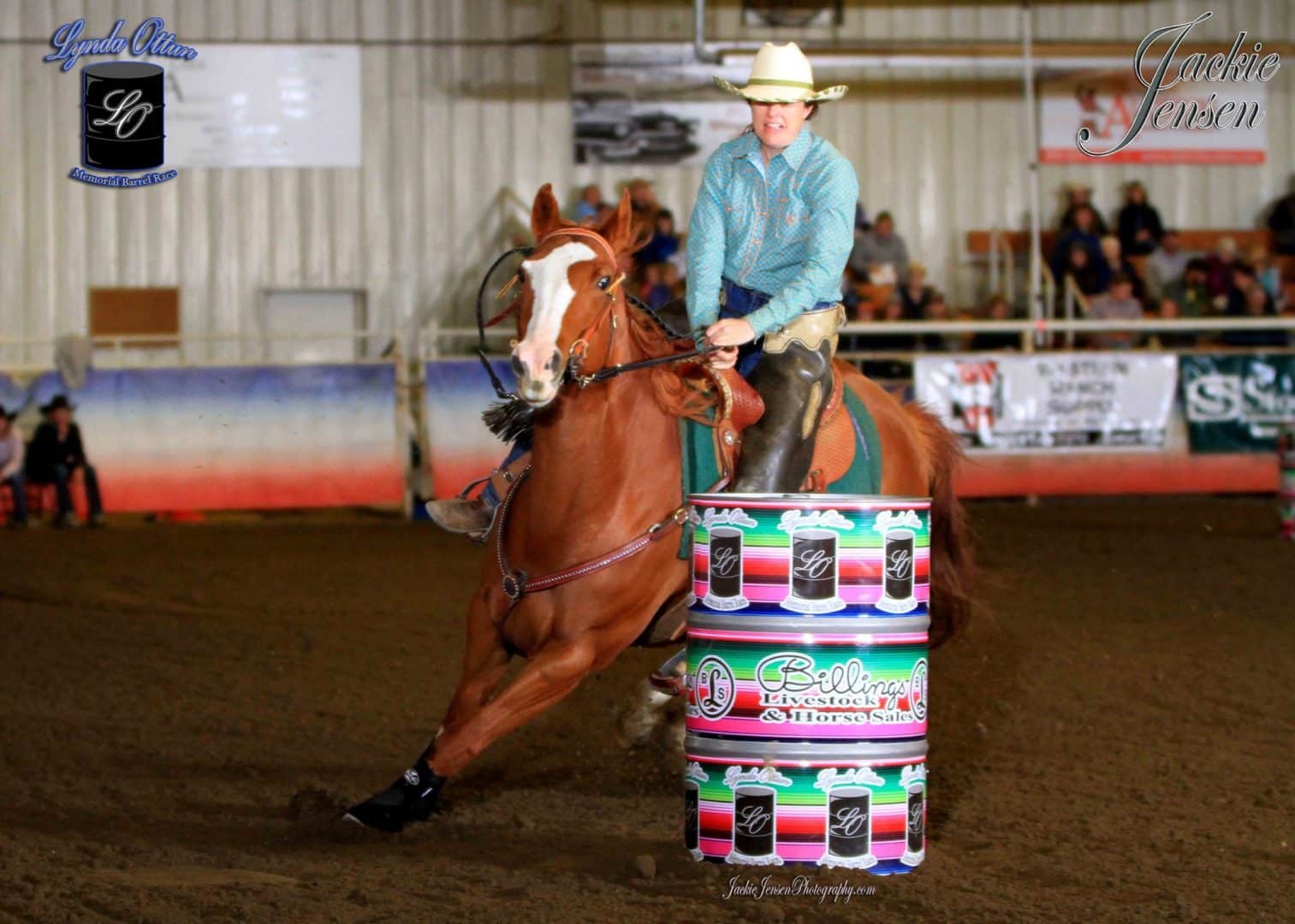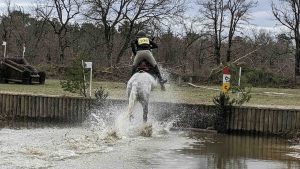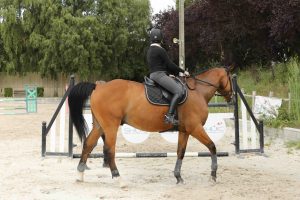Specialized in the sports monitoring of race horses and western riding horses, Kerry Pride, an equine veterinarian practicing in Montana in the United States, shares with us how she manages these equine athletes to keep them at their best level.
Photo credit : Dr Kerry Pride at Lynda Ottun Memorial Barrel Race 2019 © Jackie Jensen
Barrel, roping, reining… what are the different events in western riding?
Very popular in the USA, western riding comes from working equitation and cattle handling.
We identify different events such as:
👉 Barrel race : In this discipline, the rider and his horse are judged on their ability to turn as quickly as possible around barrels. There is three barrels in total and they are arranged in the shape of a cloverleaf. It is a test of speed and skill, the couple who achieves the best time is declared the winner!
👉 Roping : This discipline combines speed, coordination and skill in handling the lasso. In this challenge, cowboys and cowgirls must lasso a calf by the legs as quickly as possible.
👉 Cutting : In this event, the rider/horse pair is judged on its ability to separate a cow from its herd. The dominant horse breeds for this type of mission are the quarter horse, the appaloosa, the paint horse and the camargue.
👉 Reining : This discipline is similar to dressage applied to western riding. The quarter horse is particularly represented in this sport. The rider seeks to control his mount as precisely as possible and without resistance to perform different tricks: sliding stop, spin, rollback, circles, backing up...
In addition to the sports monitoring of western horses, Dr. Kerry Pride also works in the locomotor monitoring of racehorses.
In the USA, horses in these disciplines compete for the most part from April to October. Some can compete all year round with 4 to 8 weeks off.
Dr. Pride is present at the competitions in which certain horses take part, which she follows on the musculoskeletal level and advises trainers on potential care, rest, fittings etc. to be provided to equine athletes, to keep them performing throughout the season.
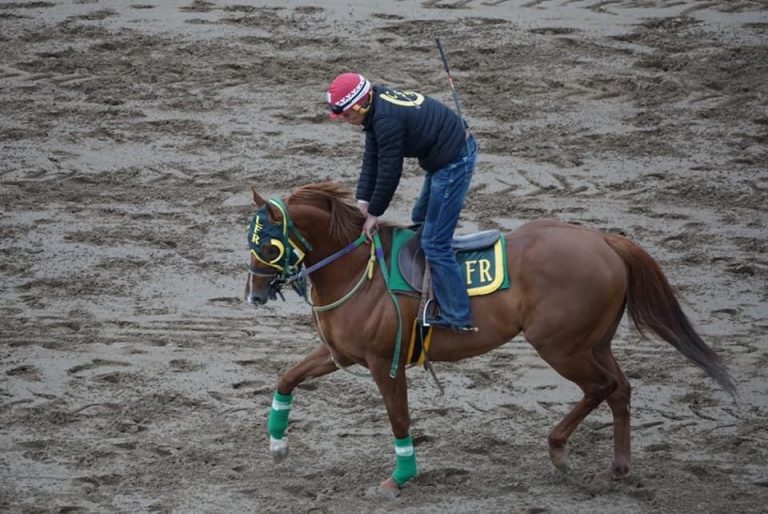
Accompany the locomotion of sport horses individually
To support sport horses through competitions and to their best performance potential, Kerry's veterinary practice focuses primarily on spinal manipulation (equine chiropractic), acupuncture and shoeing aftercare, for example advocating the application of aluminum horseshoes to limit vibrations in the limbs. Depending on the case, this can contribute to the preservation of the health capital of the musculoskeletal system of the athlete horse.
The objective of Dr. Pride and the trainers, riders, owners with whom she collaborates is to ensure that each horse reaches its maximum potential in its own way of moving.
Indeed, as we have already mentioned in this blog, each horse has its own gait signature.
Discover on the same topic
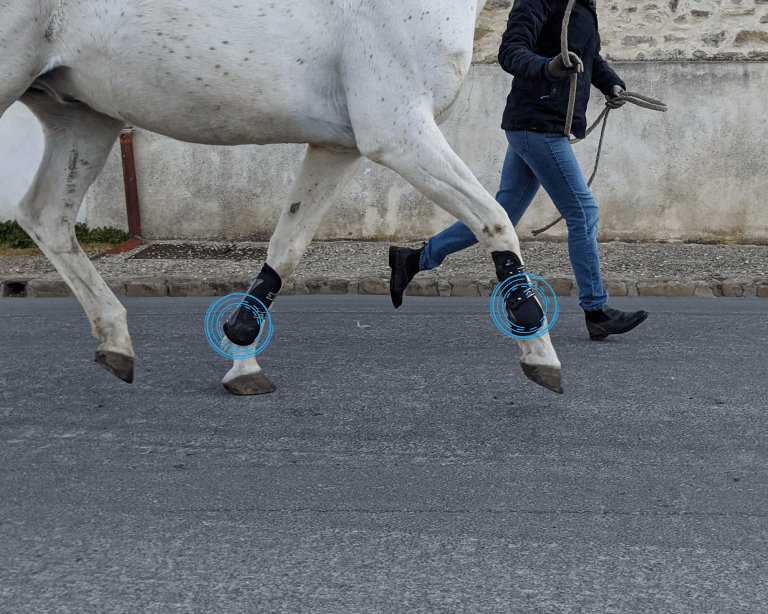
Does each horse has a unique “gait signature”?
The biomechanical study of running is the subject of much research. The use of technical
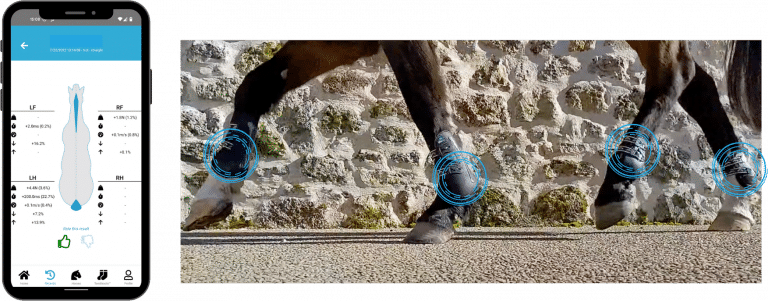
The locomotion assessment before the competition season with Kerry
"In my practice, before the horses start their competition season, I do a dynamic and static examination of the horse, then I use the Tendiboots™ to assess their locomotion.
I'm then adjust and do acupuncture.If the horse has lameness or disturbing locomotion, other diagnostic tools are used (i.e. x-rays, ultrasound, thermography, etc).
From there, a treatment plan is developed with the aim of getting the horse to move as biomechanically as possible, to ensure as much as possible that it will physically hold and remain efficient during its sporting season." explains Dr. Kerry Pride

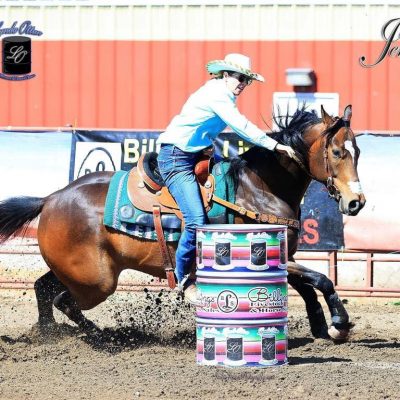
Photo credit : Dr Kerry Pride at Lynda Ottun Memorial Barrel Race 2021 © Jackie Jensen
Locomotor assessments of horses during the competition season
"Once a horse starts training, I prefer to see him every two weeks to assess the symmetry of locomotion with the Tendiboots™. I also carry out checks with my thermal camera, I bring the adjustments that I believe are necessary for the horse's performance and locomotor health. I also regularly use acupuncture."
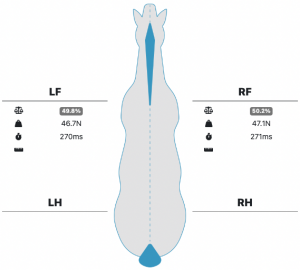


"The combined use of data from Tendiboots™ + thermal scans + acupuncture over the past two years has allowed me to detect subtle changes in the locomotion of horses. This allows me to intervene and treat if necessary before the appearance of visible lameness and prevent a drop in performance during competitions.
To end the racing/competition season, I prefer to proceed in the same way as I started: with a good static and dynamic examination and evaluating again the symmetry of locomotion with the Tendiboots™.
In addition, at the end of the season, x-rays of the racehorses are taken to compare with those taken during the pre-season.", Dr. Kerry Pride
Integration of Tendiboots™ technology for locomotion monitoring
"Incorporating a quick and easy way to monitor locomotion symmetry has been invaluable in my practice.
Horses I see are in training and considered "healthy" for their work. However, with the Tendiboots™, I was able to detect subtle asymmetries in their locomotion and address them through different methods depending on each horse.
My clients are happier, their horses healthier and able to compete in competition with fewer locomotor problems.", Dr. Kerry Pride
